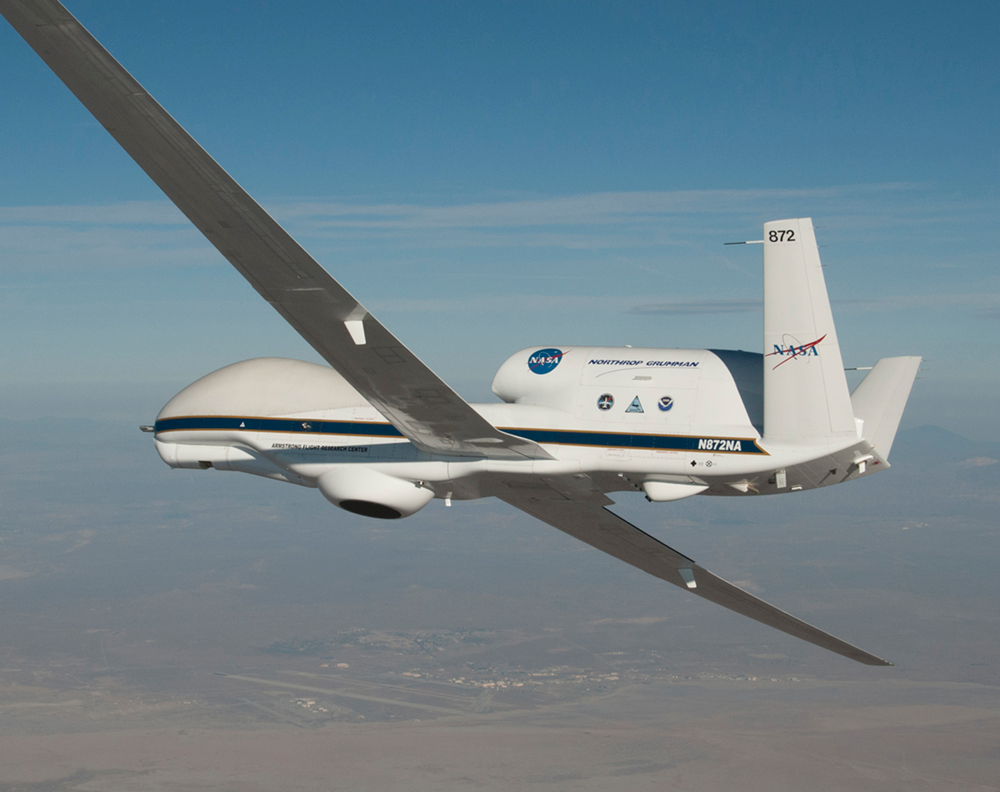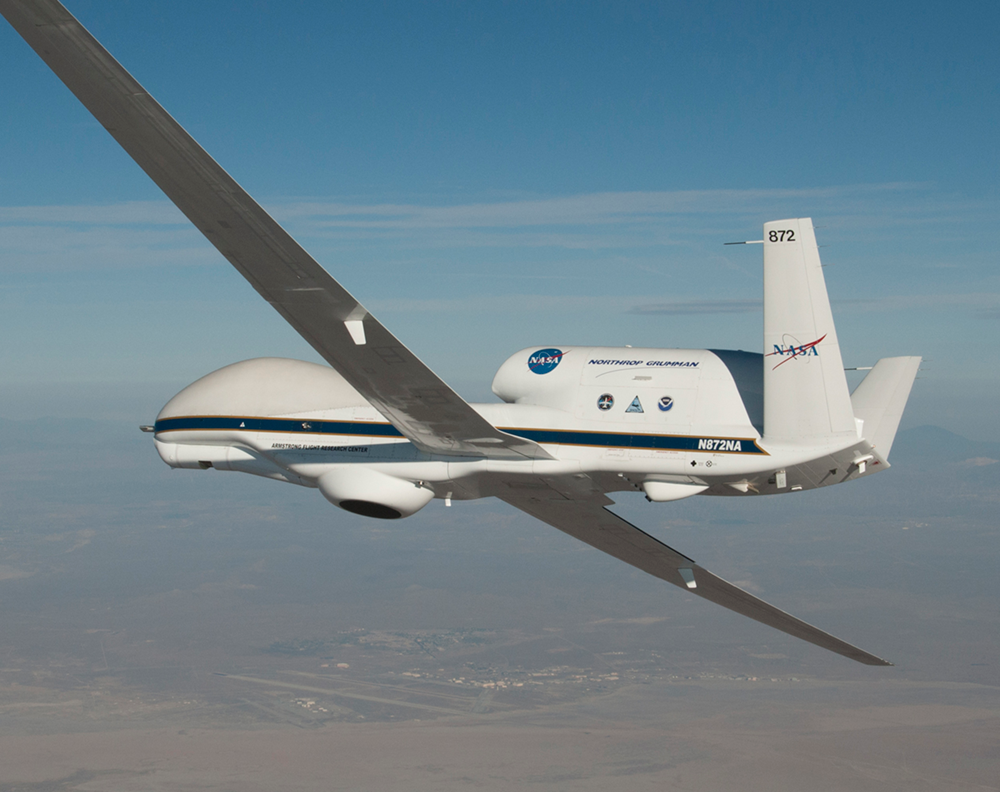Wick Et Al. Accepted For Publication In BAMS – (Article and Figure Provided by Barb Deluisi – NOAA Federal)
Abstract: The National Oceanic and Atmospheric Administration’s (NOAA) Sensing Hazards with Operational Unmanned Technology (SHOUT) project evaluated the ability of observations from high-altitude unmanned aircraft to improve forecasts of high-impact weather events like tropical cyclones or mitigate potential degradation of forecasts in the event of a future gap in satellite coverage. During three field campaigns conducted in 2015 and 2016, the National Aeronautics and Space Administration (NASA) Global Hawk, instrumented with GPS dropwindsondes and remote sensors, flew 15 missions sampling 6 tropical cyclones and 3 winter storms. Missions were designed using novel techniques to target sampling regions where high model forecast uncertainty and a high sensitivity to additional observations existed. Data from the flights were examined in real time by operational forecasters, assimilated in operational weather forecast models, and applied post-mission to a broad suite of data impact studies. Results from the analyses spanning different models and assimilation schemes, though limited in number, consistently demonstrate the potential for positive forecast impact from the observations, both with and without a gap in satellite coverage. The analyses with the then-operational modeling system demonstrated large forecast improvements near 15% for tropical cyclone track at a 72-h lead time when the observations were added to the otherwise complete observing system. While future decisions regarding use of the Global Hawk platform will include budgetary considerations, and more observations are required to enhance statistical significance, the scientific results support the potential merit of the observations. This article provides an overview of the missions flown, observational approach, and highlights from the completed and ongoing data impact studies.
Journal: Bull. Amer. Meteor. Soc. – Article Accepted Date: 1/23/20

Authors:
Gary A. Wick1,2, Jason P. Dunion3,4, Peter G. Black5, John R. Walker6, Ryan D. Torn7, Andrew C. Kren3,4, Altug Aksoy3,4, Hui Christophersen3,4, Lidia Cucurull4, Brittany Dahl3,4, Jason M. English8,9, Kate Friedman10, Tanya R. Peevey9,11, Kathryn Sellwood3,4, Jason A. Sippel4, Vijay Tallapragada10, James Taylor12, Hongli Wang8,9, Robbie E. Hood13, and Philip Hall2
1 Physical Sciences Division, NOAA/Earth System Research Laboratory, Boulder, CO
2 NOAA Unmanned Aircraft Systems Program Office, Silver Spring, MD
3 Cooperative Institute for Marine and Atmospheric Studies, University of Miami, Miami, FL
4 Hurricane Research Division, NOAA/Atlantic Oceanographic and Meteorological Laboratory, Miami, FL
5 I.M. Systems Group, Inc., supporting NOAA/NCEP/EMC
6 Cherokee Nation Strategic Programs, supporting NOAA UAS Program Office
7 Department of Atmospheric and Environmental Sciences, University at Albany, State University of New York, Albany, NY
8 Cooperative Institute for Research in Environmental Sciences, University of Colorado Boulder
9 Global Systems Division, NOAA/Earth System Research Laboratory, Boulder, CO
10 Environmental Modeling Center, NOAA/NWS/NCEP, College Park, MD
11 Cooperative Institute for Research in the Atmosphere, Colorado State University, Fort Collins, CO
12 RIKEN Center for Computational Science, Kobe, Japan
13 Retired, NOAA Unmanned Aircraft Systems Program Office, Silver Spring, MD
Important Conclusions: The authors found that while more observations are ultimately required to enhance statistical significance, the analyses consistently demonstrated the potential for observations from uncrewed high-altitude aircraft to improve forecasts in both regional and global models. Their results suggested that when observations were added, tropical cyclone forecasts improved by as much as 15 percent within the then-operational modeling systems. The results argue for the potential scientific merit of these observations.
Significance: Although NOAA has no immediate plans to operate a Global Hawk-type aircraft in the manner evaluated, it is highly beneficial to learn how to further improve forecasts of hurricanes and other high-impact weather events. Several of the lessons learned are being applied to improving operational concepts and refined tasking for NOAA’s traditional aircraft.

